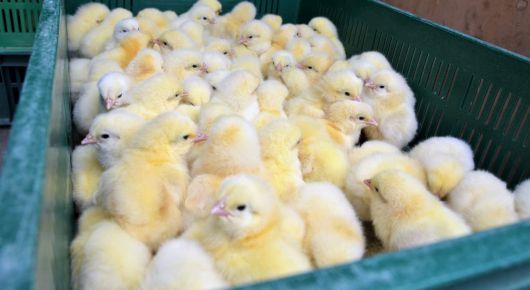Families in Ukraine to receive additional emergency agricultural support

The Food and Agriculture Organization of the United Nations (FAO) continues to protect the lives and livelihoods of conflict-affected people. Households from 52 settlements along the “contact line” will be provided with day-old chickens and animal feed. The help, valued at USD 1 million, comes as part of United Nations emergency support.
A total of 930 households are being provided with 30 chickens each of dual-purpose breed, which can be raised for either meat or egg production. Each family also receive 10 kg of specialized starter feed and a complete, step-by-step guide to keeping young poultry. A total of 28 000 chickens and 9 300 kg of feed are being distributed to 22 villages in the Donetsk oblast and 11 villages in the Luhansk oblast from 5 to 14 August 2019.
The five-year-old conflict has had a severe impact on the agricultural sector and on the socio-economic status of the rural population. Vulnerable people are increasingly forced to buy food on credit, cut health expenditures, or resort to begging. Rural families have lost access to many sources of livelihood that were available before the conflict; access to farmland is severely curtailed due to widespread mine contamination.
“Our goal is to safeguard the livelihoods of the most at-risk families by improving their nutritional status and preventing further economic losses due to the conflict,” said Khushnid Sattarov, FAO Programme Coordinator in Ukraine. “The distributed animals can cover the households’ access to protein for about six months, which is vitally important for the food security of the families – especially for children and pregnant and breastfeeding women.”
Some of the assisted people had previously resided in the non-government controlled areas and were forced to relocate after the conflict began, while others remained in 0–5 km zone along the “contact line.” There is little opportunity for people in this area to earn money, and their primary source of food is what they can produce themselves.
“We survive as we can,” said Svitlana, a local resident. “We used to grow chickens and livestock. Now we have 30 chickens for growing, and we still do not know who will grow out. If it will be hens, we would like to keep them for egg production. Roosters will go to meat production.”
During the 2015–2019 period, FAO has supported about 47 000 households located along the “contact line” through different types of agricultural resources, including young poultry, rabbits, animal feed, vegetable seeds, drip irrigation systems, and more.
By early autumn, FAO’s team in Ukraine plans to distribute 330 tonnes of animal feed among another 2 200 rural households and livestock holders in the area.
5 August 2019, Kyiv, Ukraine
